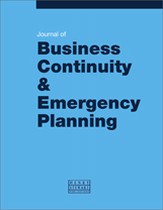Measuring disaster-resilient communities: A case study of coastal communities in Indonesia
Abstract
Vulnerability reduction and resilience building of communities are central concepts in recent policy debates. Although there are fundamental linkages, and complementarities exist between the two concepts, recent policy and programming has focused more on the latter. It is assumed here that reducing underlying causes of vulnerabilities and their interactions with resilience elements is a prerequisite for obtaining resilience capabilities. An integrated approach, incorporating both the vulnerability and resilience considerations, has been taken while developing an index for measuring disaster-resilient communities. This study outlines a method for measuring community resilience capabilities using process and outcome indicators in 43 coastal communities in Indonesia. An index was developed using ten process and 25 outcome indicators, selected on the basis of the ten steps of the Integrated Community Based Risk Reduction (ICBRR) process, and key characteristics of disaster resilient communities were taken from various literatures. The overall index value of all 43 communities was 63, whereas the process and outcome indicator values were measured as 63 and 61.5 respectively. The core components of this index are process and outcome indicators. The tool has been developed with an assumption that both the process and outcome indicators are equally important in building disaster-resilient communities. The combination of both indicators is an impetus to quality change in the community. Process indicators are important for community understanding, ownership and the sustainability of the programme; whereas outcome indicators are important for the real achievements in terms of community empowerment and capacity development. The process of ICBRR approach varies by country and location as per the level of community awareness and organisational strategy. However, core elements such as the formation of community groups, mobilising those groups in risk assessment and planning should be present in all the countries or locations. As this study shows, community resiliency can be measured but any such measurement must be both location- and hazard-specific.
The full article is available to subscribers to the journal.
Citation
Kafle, Shesh Kanta (2012, March 1). Measuring disaster-resilient communities: A case study of coastal communities in Indonesia. In the Journal of Business Continuity & Emergency Planning, Volume 5, Issue 4. https://doi.org/10.69554/YNFR8429.Publications LLP
